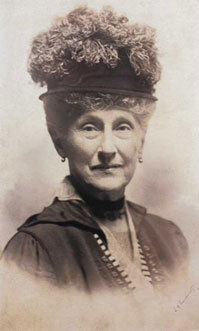
Eamonn Kevin Roche was an Irish-born American Pritzker Prize-winning architect. Kevin Roche was the archetypal modernist and "member of an elite group of third generation modernist architects — James Stirling, Jorn Utzon, and Robert Venturi — and is considered to be the most logical and systematic designer of the group. He and his partner John Dinkeloo of the firm KRJDA produced over a half-century of matchless creativity."

The Milwaukee Art Museum (MAM) is an art museum in Milwaukee, Wisconsin. Its collection contains nearly 25,000 works of art.

John Russell Pope was an American architect whose firm is widely known for designing major public buildings, including the National Archives and Records Administration building, the Jefferson Memorial and the West Building of the National Gallery of Art, all in Washington, D.C.

The Wolfsonian–Florida International University or The Wolfsonian-FIU, located in the heart of the Art Deco District of Miami Beach, Florida, is a museum, library and research center that uses its collection to illustrate the persuasive power of art and design. For fifteen years, The Wolfsonian has been a division within Florida International University.

Downtown Long Beach, California, United States is the location for most of the city's major tourist attractions, municipal services and for numerous businesses. There are many hotels and restaurants in the area that serve locals, tourists, and convention visitors.

Bluff Park is a small, upscale neighborhood in Long Beach, California, United States. There is a bluff along much of the beach in Long Beach, and on one stretch, there is the narrow Bluff Park from which the neighborhood gets its name.

The Currier Museum of Art is an art museum in Manchester, New Hampshire, in the United States. It features European and American paintings, decorative arts, photographs and sculpture. The permanent collection includes works by Picasso, Matisse, Monet, O'Keeffe, Calder, Scheier and Goldsmith, John Singer Sargent, Frank Lloyd Wright, and Andrew Wyeth. Public programs include tours, live classical music and "Family Days" which include activities for all ages.

Shelburne Museum is a museum of art, design, and Americana located in Shelburne, Vermont, United States. Over 150,000 works are exhibited in 39 exhibition buildings, 25 of which are historic and were relocated to the museum grounds. It is located on 45 acres (18 ha) near Lake Champlain.

Borden, Inc., was an American producer of food and beverage products, consumer products, and industrial products. At one time, the company was the largest U.S. producer of dairy and pasta products. Its food division, Borden Foods, was based in Columbus, Ohio, and focused primarily on pasta and pasta sauces, bakery products, snacks, processed cheese, jams and jellies, and ice cream. It was best known for its Borden Ice Cream, Meadow Gold milk, Creamette pasta, and Borden Condensed Milk brands. Its consumer products and industrial segment marketed wallpaper, adhesives, plastics and resins. By 1993, sales of food products accounted for 67 percent of its revenue. It was also known for its Elmer's and Krazy Glue brands.

Erie Art Museum is located in Erie, Pennsylvania. The Museum holds a collection of more than 8,000 objects, with strengths in American ceramics, Tibetan paintings, Indian bronzes, photography, and comic book art. Focusing on the museum collection, the main gallery features Everything but the Shelves; over a thousand objects hung salon-style. In addition to its collection, the museum hosts four to five visiting exhibitions annually.

The history of steam road vehicles comprises the development of vehicles powered by a steam engine for use on land and independent of rails, whether for conventional road use, such as the steam car and steam waggon, or for agricultural or heavy haulage work, such as the traction engine.
Meyer & Holler was an architecture firm based in Los Angeles, California, noted for its opulent commercial buildings and movie theatres, including Grauman's Chinese and Egyptian theatres, built during the 1920s. Meyer & Holler was also known as The Milwaukee Building Company.

Elizabeth Milbank Anderson, American philanthropist and advocate for public health and women's education, was the daughter of Jeremiah Milbank (1818–1884), a successful commission merchant, manufacturer and investor, and Elizabeth Lake (1827–1891). Anderson established in 1905 one of the first foundations funded by a woman, the Memorial Fund Association, with gifts of $9.3 million by the time of her death. Anderson in her lifetime supported a wide range of health and social reform efforts during the Progressive Era, from tuberculosis and diphtheria eradication to relief work for European children following World War I, for which she was made in 1919 a Chevalier of the Legion of Honor by the French government.
Jeremiah Milbank American businessman, was a successful dry goods commission merchant, speculator in Texas territorial bonds, manufacturer, and railroad investor. His most successful business efforts were the New York Condensed Milk Company which he co-founded with inventor Gail Borden and the Chicago, Milwaukee and St. Paul Railway (1876) where he was a member of the executive committee of the Board of Directors. Milbank was a founder and president of the board of trustees of the Madison Avenue Baptist Church at 31st. Street, New York City, and trustee of the Baptist's Rochester Theological Seminary. The city of Milbank, South Dakota, which is the seat of Grant County, was founded in 1880 and named in his honor. Among other interests, Milbank was in 1870 an original subscriber of the Metropolitan Museum of Art and owned a box at the Metropolitan Opera.

The Long Island Museum of American Art, History, and Carriages, known as the Long Island Museum (LIM), is a nine-acre museum located in Stony Brook, New York. The LIM serves the Long Island community by preserving and displaying its collection of art, historical artifacts, and carriages; providing educational and public programming; and collaborating with a variety of other arts and cultural organizations.

The Putnam-Parker Block, also known as City Square, are historic structures located in downtown Davenport, Iowa, United States. The property includes three buildings that take up the south half of block 43 in what is known as LeClaire's First Addition. The main façade of the structures face south along West Second Street. They were listed on the National Register of Historic Places in 2011. In 2020, it was included as a contributing property in the Davenport Downtown Commercial Historic District. The former Putnam Building now houses a Marriott Autograph Collection hotel named The Current Iowa.

Pedro Joseph de Lemos was an American painter, printmaker, architect, illustrator, writer, lecturer, museum director and art educator in the San Francisco Bay Area. Prior to about 1930 he used the simpler name Pedro Lemos or Pedro J. Lemos; between 1931 and 1933 he changed the family name to de Lemos, believing that he was related to the Count de Lemos (1576–1622), patron of Miguel de Cervantes. Much of his work was influenced by traditional Japanese woodblock printing and the Arts and Crafts Movement. He became prominent in the field of art education, and he designed several unusual buildings in Palo Alto and Carmel-by-the-Sea, California.

The Great Southwest Building, formerly the Petroleum Building and the Great Southwest Life Building, is a historic commercial skyscraper located at 1314 Texas Avenue in Downtown Houston, Texas, United States. Originally built in 1927 as an office space for The Texas Company, the building is now the site of the Cambria Hotel Houston Downtown Convention Center. It was listed on the National Register of Historic Places on August 8, 2019, for its historical and architectural significance.

The Propylaeum, also known as the John W. Schmidt House or as the Schmidt-Schaf House, is a historic home and carriage house located at 1410 North Delaware Street in Indianapolis, Marion County, Indiana. The Propylaeum was named after the Greek word "propýlaion," meaning "gateway to higher culture." The property became the headquarters for the Indianapolis Woman's Club in 1923, as well as the host for several other social and cultural organizations. It was initially built in 1890-1891 as a private residence for John William Schmidt, president of the Indianapolis Brewing Company, and his family. Joseph C. Schaf, president of the American Brewing Company of Indianapolis, and his family were subsequent owners of the home.

















